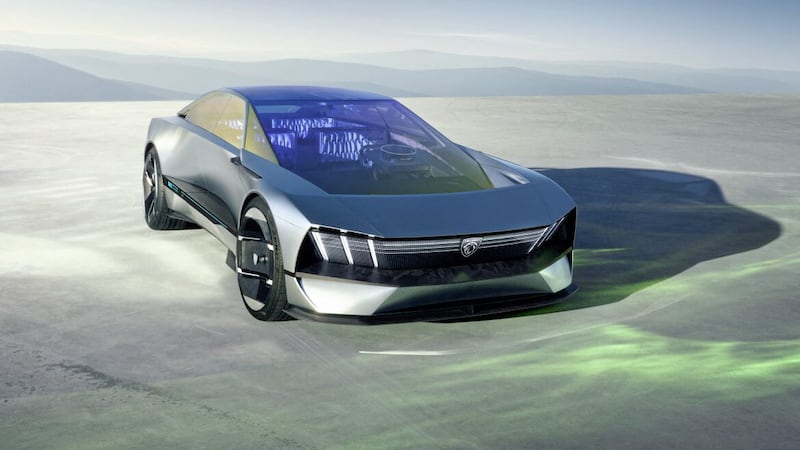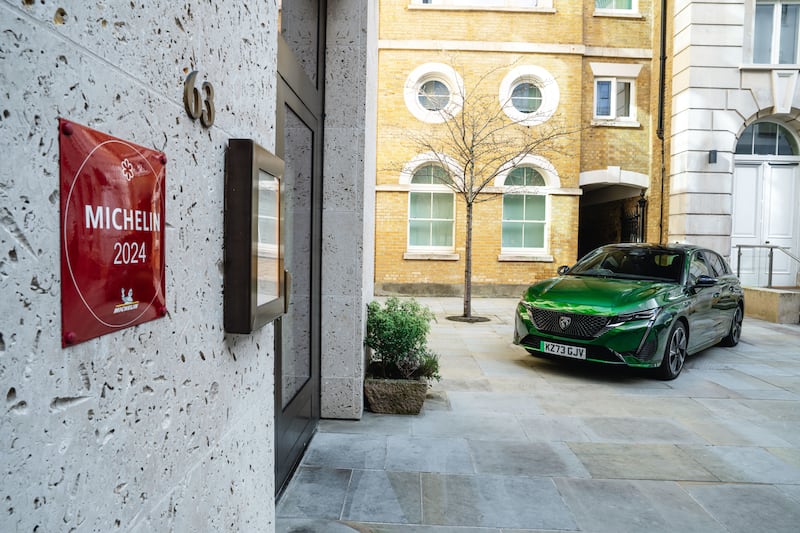PEUGEOT's new Inception Concept car definitely looks futuristic, so it should come as scant surprise that the French marque claims that its tech-packed design "embodies Peugeot's vision for future electric vehicles".
Revealed at the Consumer Electronics Show (CES) in Las Vegas last week, the Inception Concept features bold exterior and interior styling, including the next-generation Peugeot i-Cockpit and Hypersquare system with steer-by-wire technology – where the traditional steering wheel has been replaced by gaming-esque digital electric controls device – which will apparently inspire the manufacturer's future products from 2025.
Based on the STLA Large platform, the fully electric Inception Concept is powered by a 100kWh battery (twice the capacity of Peugeot's current EVs) providing a range of 497 miles. With twin electric motors, the car produces almost 680hp and accelerates from 0-62mph in under three seconds. The model also features 800V technology, enabling it to add 93 miles of range in just five minutes, and is capable of wireless induction charging.
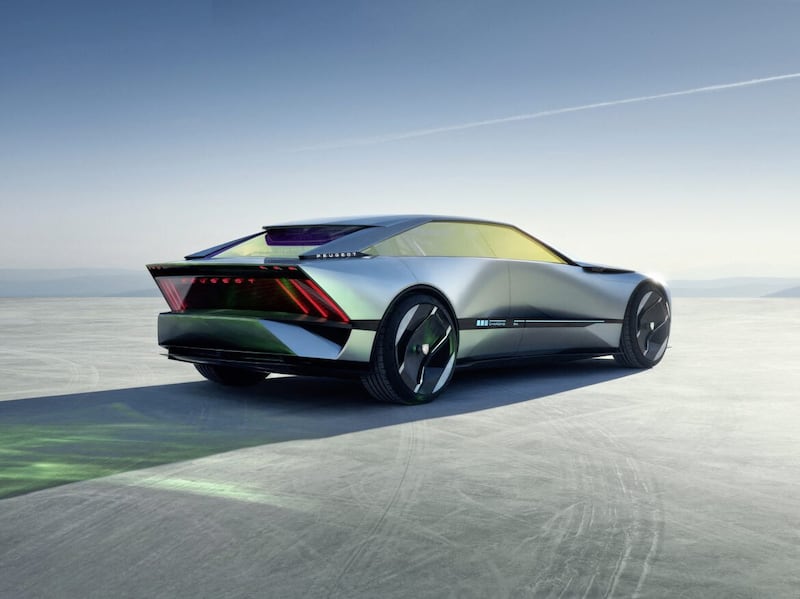
"Peugeot is committed to the electrification of its range," comments Linda Jackson, Peugeot brand CEO.
"In 2023, our entire line-up will be electrified and in the next two years, five new 100 per cent electric models will be launched. Our ambition is simple: to make Peugeot the leading electric brand in Europe by 2030.
"This objective and ambitious vision pave the way for a radical transformation for the brand, as represented by the Inception Concept."
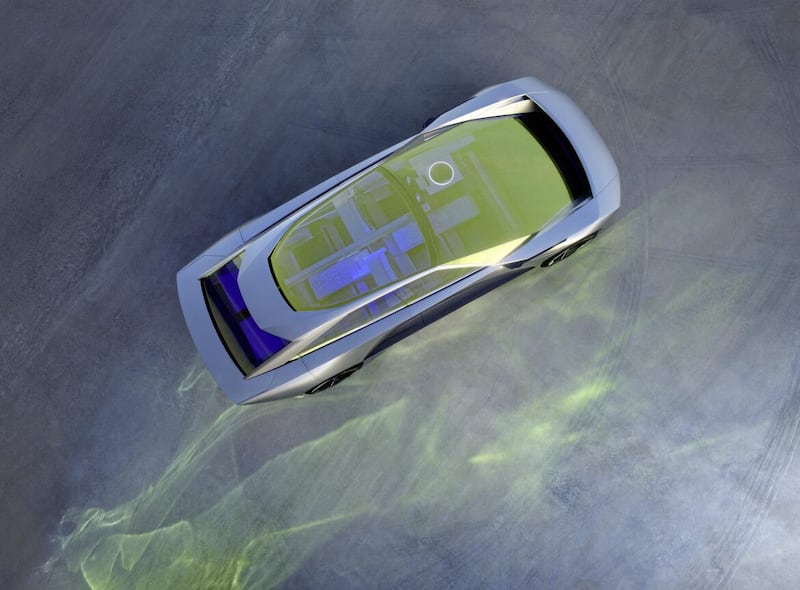
While the Inception Concept's design features clear nods to Peugeot concept ancestors like the 1980s Quasar – check that vast wrap-around cockpit glass, 7.25 square metres of it, in fact – and the more recent 504 Coupe-inspired e-Legend – there's no doubting the forward thrust of its intent.
The car's striking glasshouse is made from self-tinting thermal glazing originally designed for architecture and has been treated with metal oxides using a process developed by NASA for the visors of space helmets in order to protect astronauts from harmful UV radiation.
And, while that chrome-effect body colour might recall the e-Legend, the Inception Concept's single coat paint can actually self-tint according to prevailing conditions just like the glass.
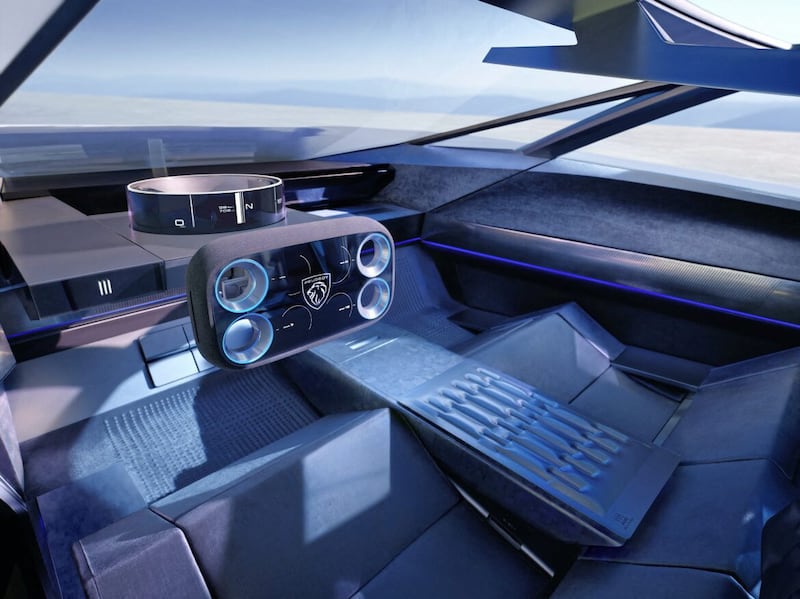
Sustainable 'moulded textiles' are also used throughout the interior. The seats are covered with a velvet made from 100 per cent recycled polyester, which extends onto the floor and features 3D patterns to act as a floor mat, while scraps of polyester fabric are re-used to make load-bearing and trim parts.
The Inception Concept is equipped with STLA Brain tech modules, including an AI-powered Tech Bar on the car's exterior can identify the driver as they approach and will prep settings to their saved preferences before they've even slipped into its i-Cockpit, which is dedicated to the driver alone and does away with the traditional dashboard, crossbar and bulkhead to provide a completely open view of the road ahead.
Meanwhile, the aforementioned Hypersquare steer-by-wire controls "allow your fingers to do the driving" while also enabling Level 4 'hands-off' autonomous driving. At the centre of the Hypersquare is a touchscreen displaying pictograms for various features – air conditioning, radio volume, advanced driver-assistance systems etc – on two side panels allowing access to the chosen function which can be operated by thumb only without the need to move your hands from the steering controls.
Peugeot say they are determined to incorporate the Hypersquare system into a production vehicle before the end of the decade – which means the Inception Concept actually might not be quite as futuristic as it first seems.
